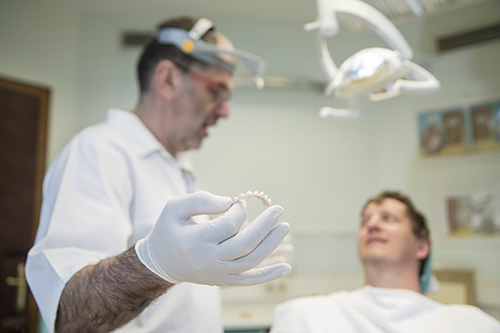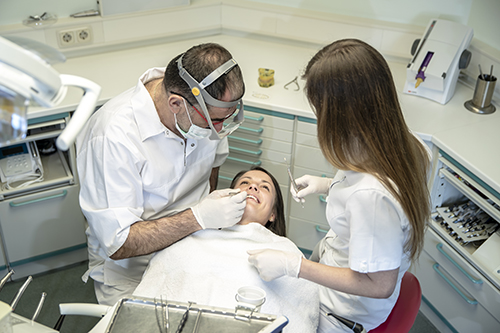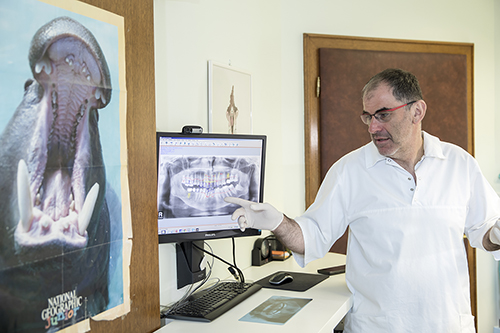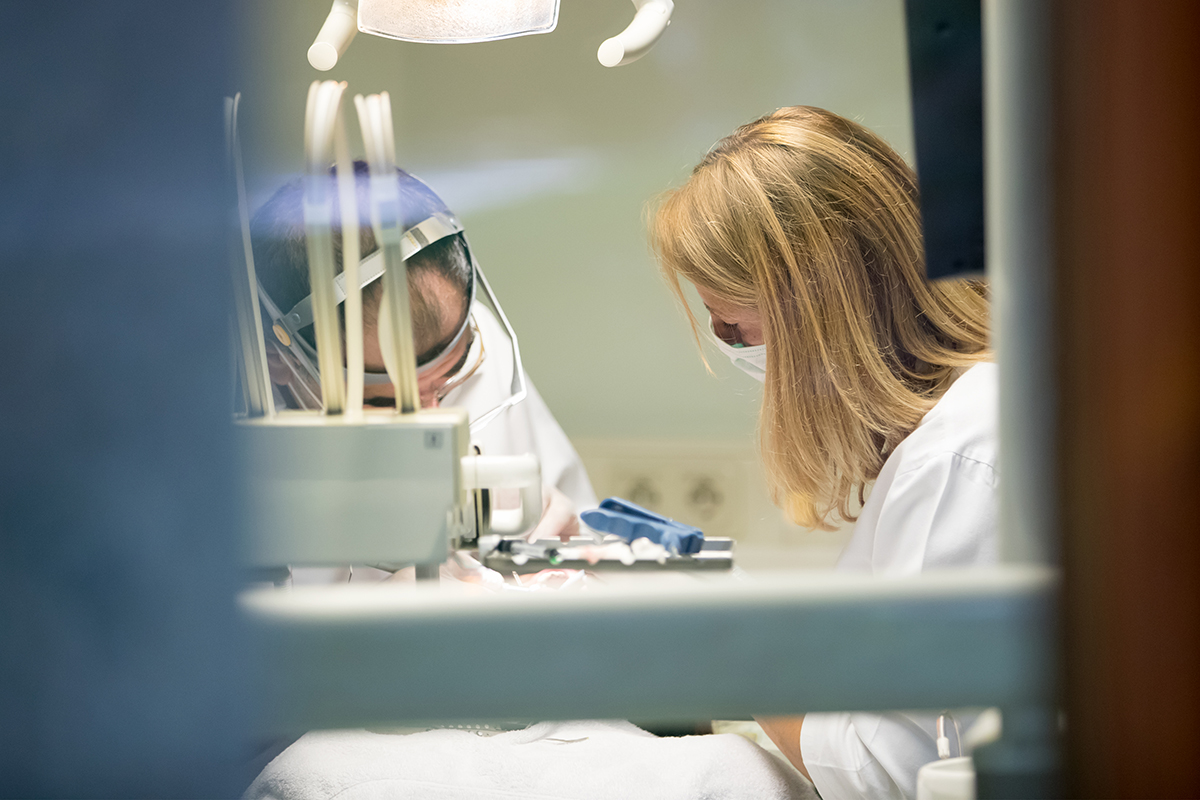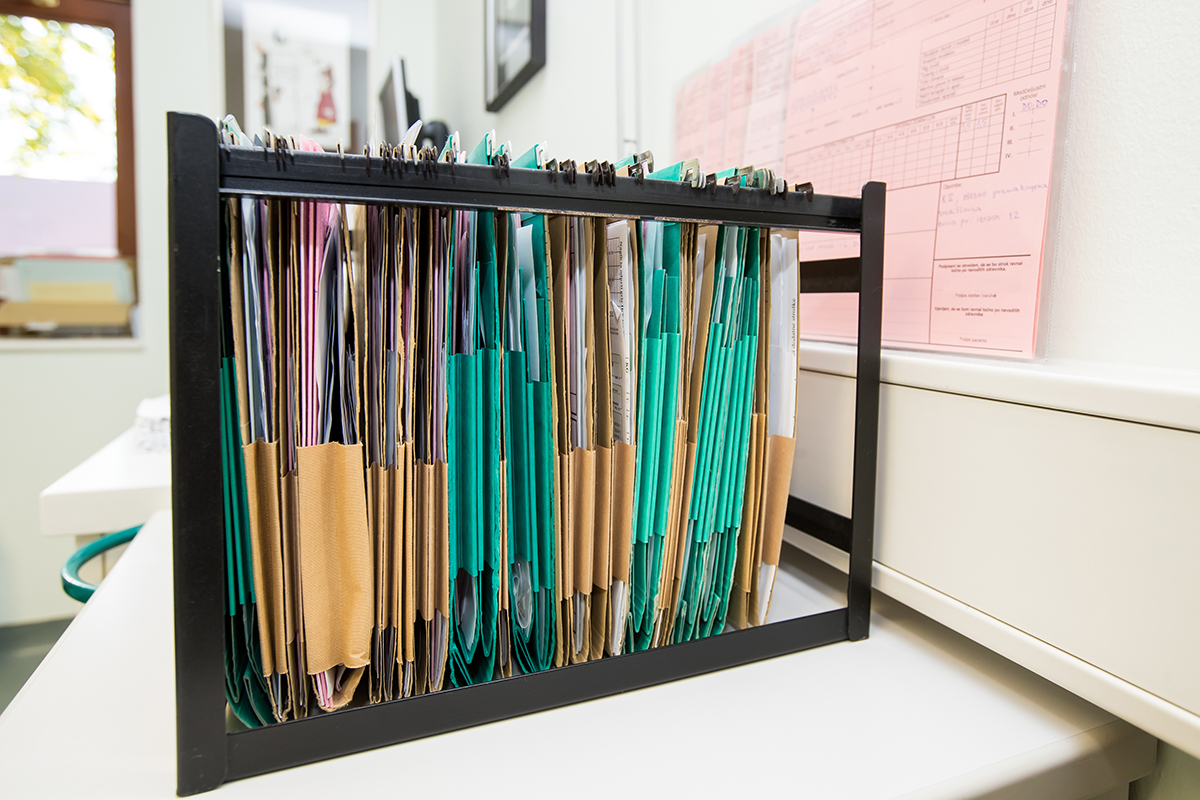Our services
Dental prosthetics
In dentistry, prosthetics means replacement of missing teeth. Teeth can be lost because of an accidents, during sports activities, knocking out, or due to caries. The loss of teeth is very unpleasant. Missing teeth result in immediate and long-term problems with biting and chewing food, and therefore they should be replaced. An optimal number of biting surfaces is essential in order to be able to chew food well, mix it with saliva and soak it with enzymes. This facilitates the work of the stomach and prevents gastrointestinal diseases. Undoubtedly, also self-confidence is affected, as we are deprived of relaxed communication and smile. Nowadays, missing teeth are mostly replaced by implants, as this does not damage other teeth. However, in some people implants should be avoided due to serious health problems (bad diabetes) or bad hygienic conditions (disabled people). In such cases classical prosthetic rehabilitation offers a lot of possibilities as well.
The following types of prosthetics are available in the Beli medved Centre:
Crown
Each tooth is covered with enamel which is extremely hard and rarely breaks but a tooth can be damaged due to various reasons (caries and mechanical damage). In these cases a crown is usually the best solution to keep and secure the tooth. The crown is made to fit the existing natural tooth and covers it, replacing the natural tooth crown (the visible part of the tooth which is not covered by gums).
Porcelain veneers
When the tooth has been badly damaged, we cover the entire tooth with porcelain veneer. These veneers are an excellent way to improve the smile when:
- teeth are too coloured,
- chipped or battered,
- there are disturbing spaces between teeth.
The tooth may be covered with a porcelain crown on a metal base. If the patient would like to have a more aesthetic version, the entire crown may be made of porcelain. Bridges require more strength and zirconium can be used instead of a dark metal to make the base. In the case of damages on the visible surface of teeth when only one plane has to be ground, a facet is affixed.
Bridge
When teeth have been removed, a bridge is made which allows for functional and aesthetic rehabilitation. The bridge replaces one or several missing teeth. It consists of artificial teeth or links, connected with crowns on both ends of the gap. The whole construction is cemented to the ground teeth on both sides of the gap.
Veneers, crowns and bridges are made of porcelain while the construction can be made of metal (precious or semi-precious metal) or on zirconium basis. One-chain bridges may be made entirely of porcelain. As porcelain is a durable and discolouring resistant material, the porcelain part of the crown is made for each patient separately so that the colour of the crown matches the natural colour of his or her teeth. In the case of prosthetic substitutes bite occlusion has to be controlled regularly (once a year) due to different wear of the porcelain and healthy teeth.
Partial prosthesis
There are partial and total prosthesis. Total prosthesis replaces all the teeth or the teeth of one jaw. The prosthesis in the upper jaw is stabilised by underpressure and the surrounding muscles while only muscles stabilise the prosthesis in the lower jaw. The pressures are transferred via plastic materials which are the basic construction of the prosthesis (to the gum).
Partial prosthesis are distinguished regarding the way of fixing to the existing patient's teeth or to the required preparation of the existing teeth so that they can hold the partial prosthesis.
The most simple and the cheapest is a temporary partial prosthesis. It consists only of pink plastic material which holds the missing teeth and a wire element for fixing the prosthesis to the existing patient's teeth. The second variant is similar but it has a metal and not a plastic holder and fixing elements are stronger.
All other constructions of partial prosthesis are more expensive but they also look better. Anchoring elements are hidden or they are not visible. Such constructions require the patient's teeth to be prepared or ground so that they can hold veneers with special elements of connecting the teeth with a partial tooth prosthesis.

